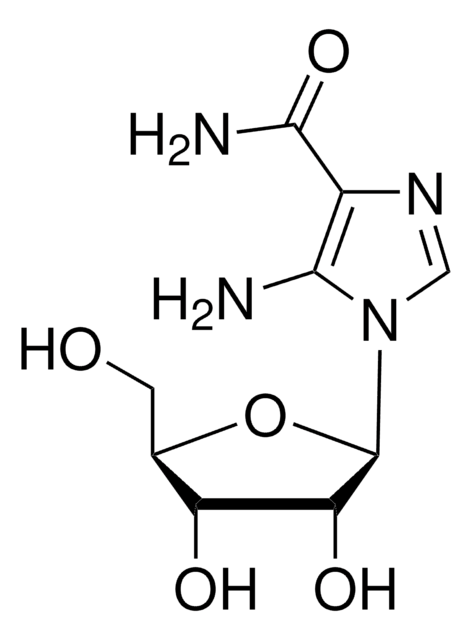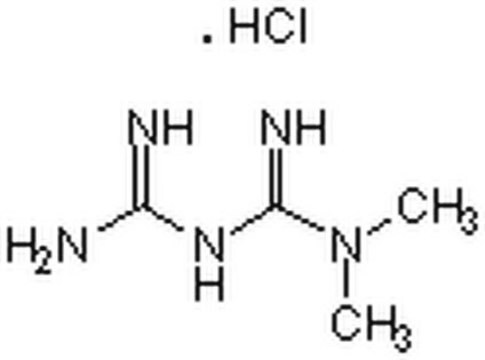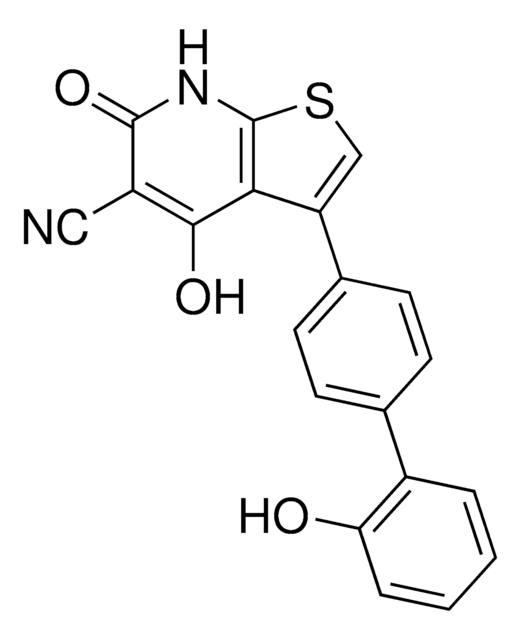123040
AICA-Riboside
AICA-Riboside, CAS 2627-69-2, is a cell-permeable nucleoside compound whose phosphorylated metabolite activates AMPK and acts as a regulator of de novo purine synthesis.
Synonym(s):
AICA-Riboside, Acadesine, AICAr, 5-Aminoimidazole-4-carboxamide-1-β-riboside, Z-Riboside, AMPK Signaling Activator II
About This Item
Recommended Products
Quality Level
Assay
≥98% (HPLC)
form
solid
manufacturer/tradename
Calbiochem®
storage condition
OK to freeze
color
white to brown
solubility
methanol: 10 mg/mL
water: soluble
shipped in
ambient
storage temp.
2-8°C
SMILES string
[n]2(cnc(c2N)C(=O)N)[C@@H]1O[C@@H]([C@H]([C@H]1O)O)CO
InChI
1S/C9H14N4O5/c10-7-4(8(11)17)12-2-13(7)9-6(16)5(15)3(1-14)18-9/h2-3,5-6,9,14-16H,1,10H2,(H2,11,17)/t3-,5-,6-,9-/m1/s1
InChI key
RTRQQBHATOEIAF-UUOKFMHZSA-N
General description
Biochem/physiol Actions
Adenosine monophosphate-activated protein kinase (AMPK)
Packaging
Warning
Preparation Note
Reconstitution
Other Notes
Culmsee, C., et al. 2001. J. Mol. Neurosci.17, 45.
Muoio, D.M., et al. 1999. Biochem. J.338, 783.
Hayashi, T., et al. 1998. Diabetes47, 1369.
Corton, J.M., et al. 1995. Eur. J. Biochem.229, 558.
Legal Information
Storage Class Code
11 - Combustible Solids
WGK
WGK 3
Certificates of Analysis (COA)
Search for Certificates of Analysis (COA) by entering the products Lot/Batch Number. Lot and Batch Numbers can be found on a product’s label following the words ‘Lot’ or ‘Batch’.
Already Own This Product?
Find documentation for the products that you have recently purchased in the Document Library.
Our team of scientists has experience in all areas of research including Life Science, Material Science, Chemical Synthesis, Chromatography, Analytical and many others.
Contact Technical Service







